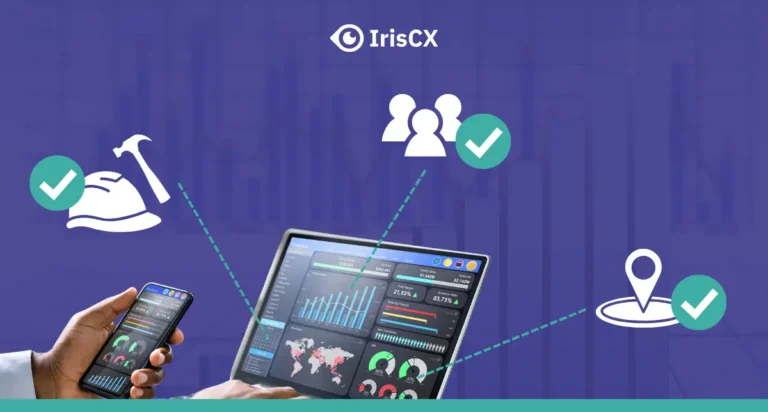The real estate world is changing fast, and those who fail to adapt risk being left behind. Rising costs, tighter margins, and outdated systems are forcing owners, operators, and property managers to rethink how they do business.
For Amy Polvoda, CEO of FacilMax and Chair of the US PropTech Council, this isn’t just a crisis—it’s an opportunity. With 21 years in the industry as a developer, operator, and syndicator, Amy knows how to turn challenges into wins.
At the JW Marriott in Austin, Amy shared her insights on centralization, the power of technology, and how to “get to hell yes” in real estate operations. Her message is clear: embracing change isn’t optional anymore—it’s essential.
Setting the Stage
“The real estate industry is in a recession,” Amy said. “Even if the broader economy doesn’t agree, we feel the pain.”
Rising interest rates and shrinking margins are hitting owners and operators hard, especially those who bought properties in 2021 or 2022 with variable-rate debt. Many now face plummeting valuations and limited refinancing options.
Outdated industry practices create inefficiencies. Property managers (PMs) earn fees based on collected revenue, not operating expenses. That means they have little incentive to cut costs, leaving owners to deal with rising expenses and decreasing net operating income (NOI).
“Real estate is full of structural inefficiencies,” Amy said. “We’ve been doing things the same way for a hundred years. It’s time to question everything.”
For years, the industry tolerated inefficiency. But now, the pressure is mounting.
“What worked before just doesn’t work anymore,” Amy said.
The Complexity of Change
Centralizing operations—consolidating data, decision-making, and processes—eliminates inefficiencies and helps businesses operate smarter. But as Amy pointed out, it’s not that simple.
“Change is painful. Companies don’t know where to start. The sheer scale of transformation feels overwhelming.”
Here’s why centralization feels so daunting:
- Entrenched Processes: Legacy systems and workflows make overhauling operations overwhelming. Companies stick with what they know, even if it’s inefficient.
- Lack of Expertise: Most real estate firms don’t employ data scientists or tech experts, leaving them without the skills to drive transformation.
- Labor Shortages: Finding and keeping qualified staff—especially maintenance technicians—is harder than ever, adding another layer of complexity.
Amy pointed to another critical obstacle: misaligned incentives.
“Most property managers don’t have a stake in the NOI. They’re paid on revenue, not profitability. That fundamental misalignment slows everything down.”
Structural issues within the industry also slow progress. Property managers often resist centralization because it adds overhead, which eats into their fees. Owners, on the other hand, feel the financial pain directly but don’t always know how to drive change.
“It’s not just about technology,” Amy said. “It’s about shifting mindsets and rethinking how we structure relationships in the industry.”
The Turning Point: How PropTech Leads the Way
Despite the challenges, centralization offers a way forward. Amy believes the key lies in using technology to simplify operations, reduce costs, and improve decision-making.
FacilMax: A Case Study in Tech-Driven Change
Amy’s company, FacilMax, exemplifies how technology transforms real estate. FacilMax aggregates building data through IoT devices, enabling owners and operators to spot and fix problems before they escalate.
“Real estate is full of distributed assets, people, and problems,” Amy said. “To manage all that, you need centralized data and centralized operations. That’s where the magic happens.”
She shared a personal story to illustrate this impact:
“Years ago, I had a water leak on one of my properties that created a 30-foot sinkhole in the parking lot. If I’d had IoT back then, I could’ve caught the leak early and avoided the mess. That one piece of data would’ve saved me thousands.”
Borrowing From Other Industries
Remote operations aren’t a new idea. The military has used remote maintenance for years to support field operations, coaching personnel on repairs from a distance. Heavy industries, like aviation, rely on remote diagnostics to avoid costly downtime.
Real estate can learn from these industries. By centralizing data and operations, companies can solve problems faster and make smarter decisions.
“The lessons are already there,” Amy said. “We just need to apply them to real estate.”
The Midwest Moves Fast
Amy noted that some regions are already adapting. States like Indiana, Minnesota, and Pennsylvania take proactive steps to avoid the mistakes of Sun Belt states, where high labor costs and compressed rents create additional challenges.
“The Midwest isn’t waiting for problems to hit them,” Amy said. “They’re watching what’s happening elsewhere and moving faster to embrace centralization.”
The Path Forward: A Simple Roadmap
For real estate companies willing to make changes, the rewards of centralization far outweigh the challenges. Amy outlined a three-step roadmap to get started:
1. Focus on Data
“You can’t manage what you don’t measure,” Amy said.
Centralizing data is the first step. Tools like FacilMax provide the transparency owners and operators need to identify inefficiencies and prioritize fixes.
2. Adopt the Right Technology
IoT sensors, remote maintenance platforms, and centralized software are game-changers. These tools automate routine tasks, reduce human error, and help companies do more with less.
3. Work With Experts
Most companies don’t have the in-house expertise to lead a transformation. Partnering with consultants who understand both real estate and technology ensures a smoother path forward.
Amy emphasized that every company’s journey will look different, but the principles are universal:
“Start small, focus on measurable wins, and build from there.”
Key Takeaways
Amy shared three actionable insights for companies ready to embrace change:
- Lean Into Change
“Transformation is hard, but it’s necessary. Those who avoid it will fall behind. Those who embrace it will thrive.”
- Invest in Data and Tech
Centralized operations depend on technology. IoT and remote diagnostics aren’t just nice to have—they’re essential for staying competitive.
- Create a Clear Roadmap
“Without a roadmap, you’re just guessing. But with a plan, you can move forward confidently.”
Conclusion
The real estate industry is at a turning point. Rising costs, shrinking margins, and outdated practices have created a perfect storm, but forward-thinking leaders like Amy Polvoda are showing the way out.
By embracing centralization, leveraging technology, and investing in expertise, companies can transform challenges into opportunities.
“Getting to ‘Hell Yes’ isn’t about finding a magic solution,” Amy said. “It’s about committing to change, step by step. It’s not easy, but it’s worth it.”
The process takes time and effort, but as Amy puts it:
“The lemon is worth the squeeze.”
Those who dare to innovate will emerge stronger, more efficient, and ready to lead in the future of real estate.




